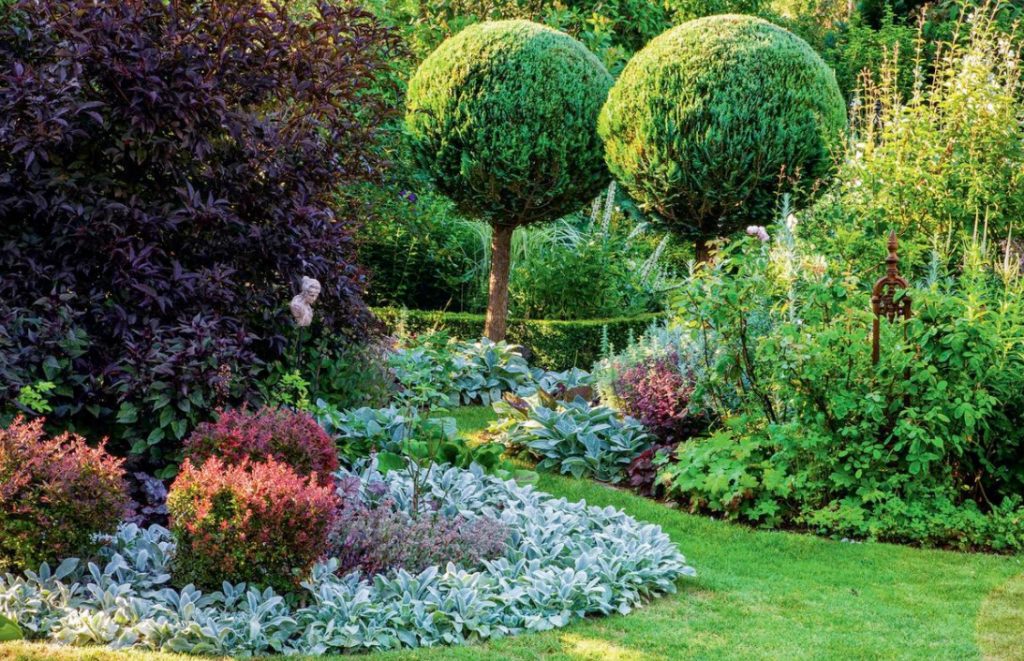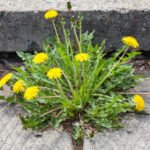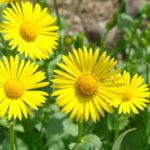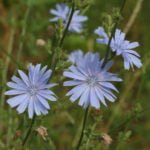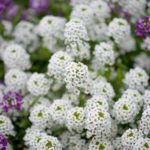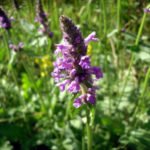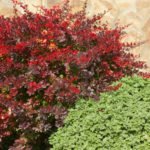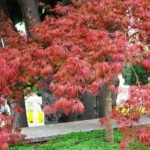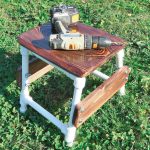Creeping fast-growing herbaceous perennials and shrubs are modest cute Cinderella garden, able to work good miracles. Do you know what they can do?
Groundcover plants have won the fame of little wizards for a reason. Judge: they cover the thin “legs” of their tall counterparts in flower beds, successfully green the area around trees and shrubs, and are excellent designers of paths, whether it is edging or filling in seams.
In the photo: along the path to the house, stately trees are lined up in two rows. Under their shade, herbaceous perennials typical of the forest grow well: Epimedium, Helleborus, Pulmonaria, Polygonatum and Hyacinthoides. Above them rises Lunaria rediviva with light purple flowers.

And in plantings with early blooming bulbous our heroes are simply irreplaceable: they effectively decorate a flower garden, when leaving the rest of the tulips lose their appeal. Moreover, these fairies also bring practical benefits — they retain moisture in the soil and prevent the growth of weeds.
In the photo: openwork Campanula poscharskyana ‘Blau ranke’ picturesquely creeps among the stones. It is ideally complemented by sage with dark blue xiphoid inflorescences.
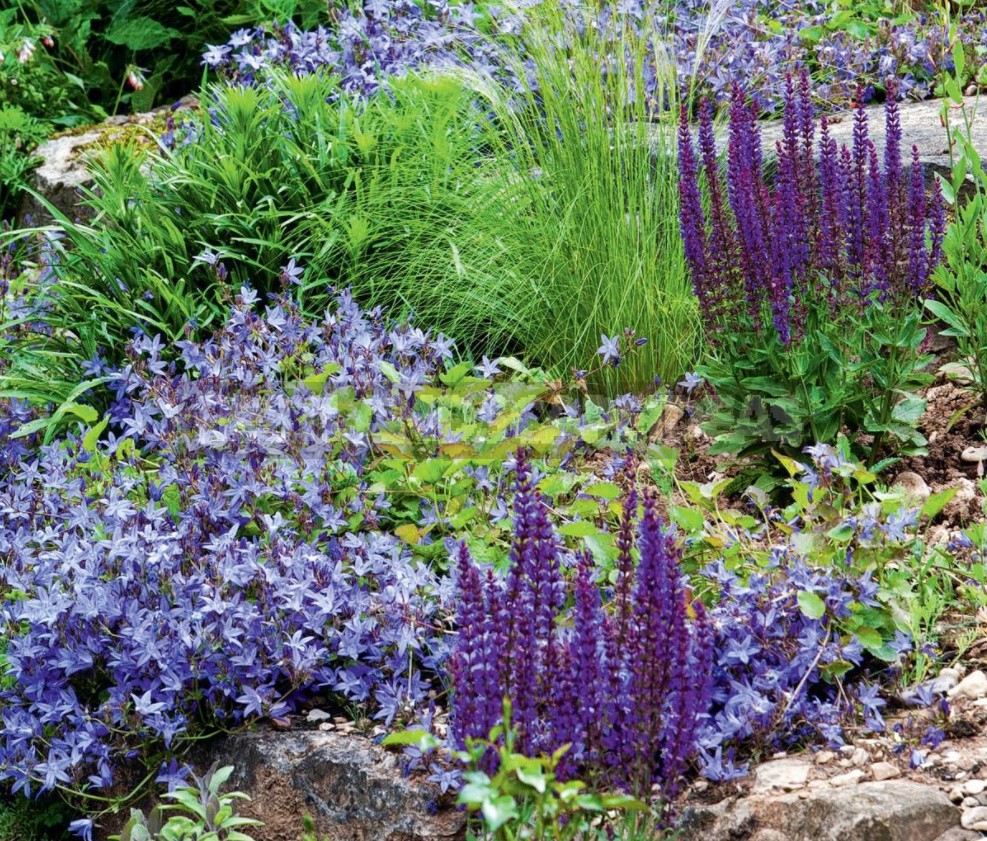
Such great and diverse opportunities in the garden doing the plants a truly versatile assistants.
In the photo on the left: delicate Myosotis ‘Jack Frost’ with sky-blue flowers and silver heart-shaped leaves unobtrusively frames the place of rest. Right: spotted leaves of Pulmonaria ‘Trevi Fountains’ paired with green and red Bergenia rosettes turn into eye-catching accents under trees and shrubs.
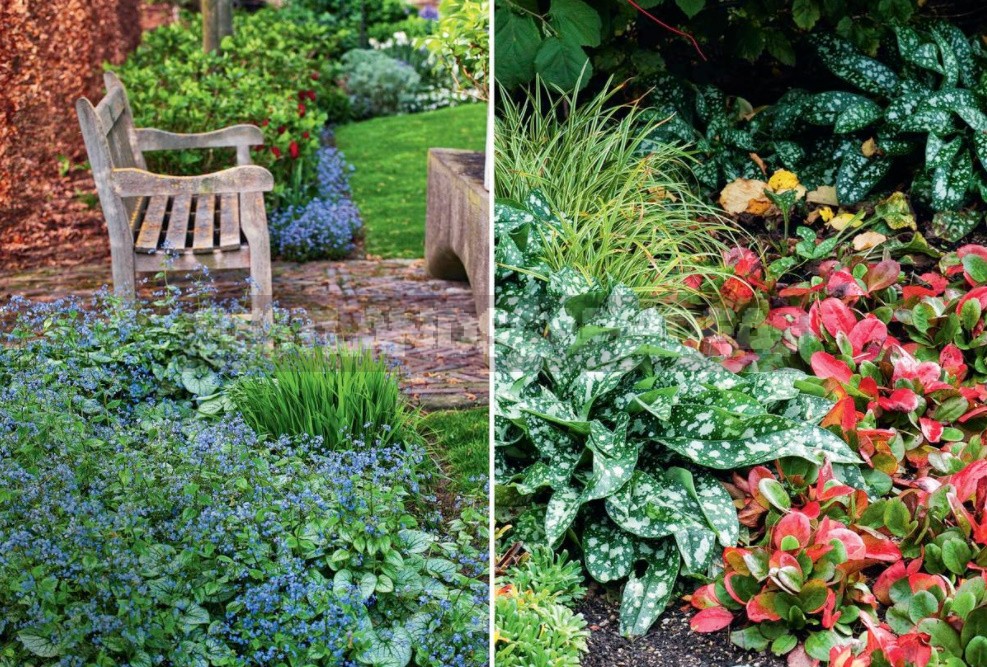
Groundcover plants are ideal for borders. In the photo below (left), blooming Alchemilla frames a gravel path. The petite lemon-yellow beauty was accompanied by Bergenia and Geranium. On the right-Ajuga reptans grows rapidly, forming a thick “carpet”. The plant creeps around the bird feeder. Hosta and Peucedanum ostruthium are located next to each other.
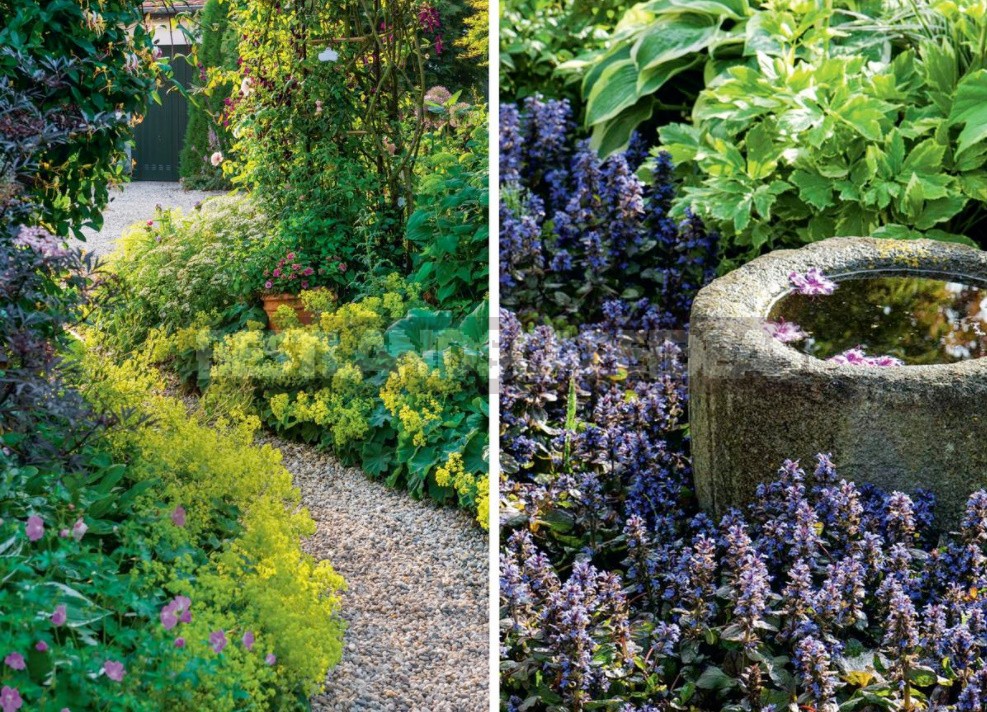
Let’s figure out which representatives of the flora are called groundcovers. This group includes low-growing mainly perennial herbaceous plants, semi-shrubs and even shrubs. All of them quickly grow and spread on the ground, so that in a short time they cover a large area with a dense canopy.
In the photo on the left: low-growing shrubs, such as Lonicera pileata, enliven semi-shady corners all year round. Right: in winter, Cornus alba ‘Sibirica’ with red branches stands out against the General grey background. Enhances the effect of Bergenia with maroon leaves.
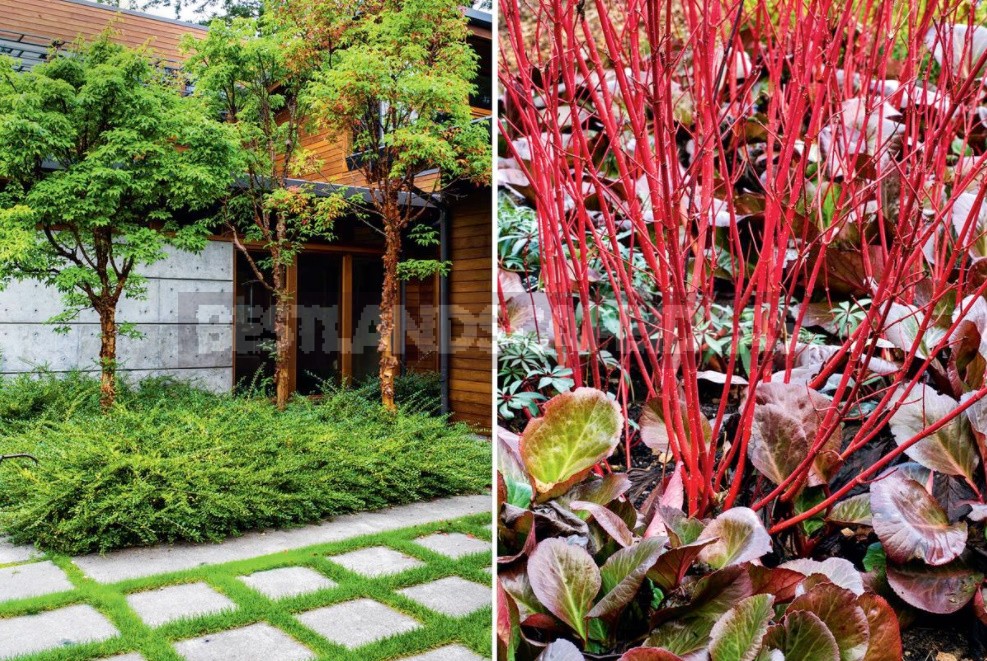
Many of the groundcovers are also extremely hardy — if the place in the garden is suitable, then you need minimal care.
Depending on the type and variety, they are divided into summer -, winter – and evergreen, often have bright flowers or decorative leaves, and also form dense “carpets”, semicircular “pillows” and openwork “balls”.
In the photo: Ceratostigma-like a weightless bright scarf thrown over boulders. In August-September, the plant is decorated with blue flowers and gradually reddening leaves.
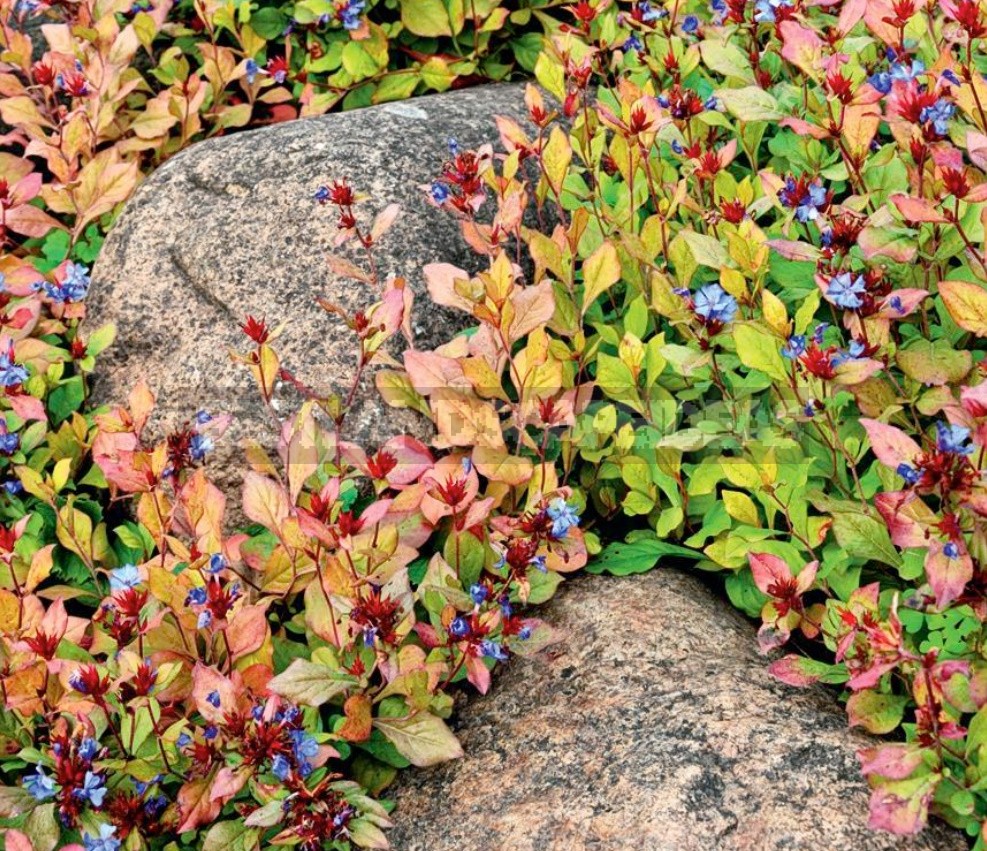
There are also giants among them, for example, some types of juniper and groundcover roses.
With such a rich selection, it is not difficult to choose a perfectly “woven” “carpet” for a flower garden. The main thing to pay attention to is the “addiction” of green residents to the sun or shade. After all, light-loving representatives of the flora in the shade will certainly not bloom and will not be able to boast of the density of leaves, and shade-tolerant ones are likely to die, suffering from sunburn.
They like it hot: a Sunny flower garden
1. Hardy Dryas octopetala, only 10-15 cm tall, blooms in June-July. In the southern regions in winter, the plant decorates planting rosettes of green leaves.
2. Acaena buchananii — an evergreen plant with filigree leaves that quickly grows, “weaving” a dense “carpet” 5-10 cm high.
3. At first glance, Euonymus fortunei ‘Emerald’n Gold ‘ charms with its variegated leaves.
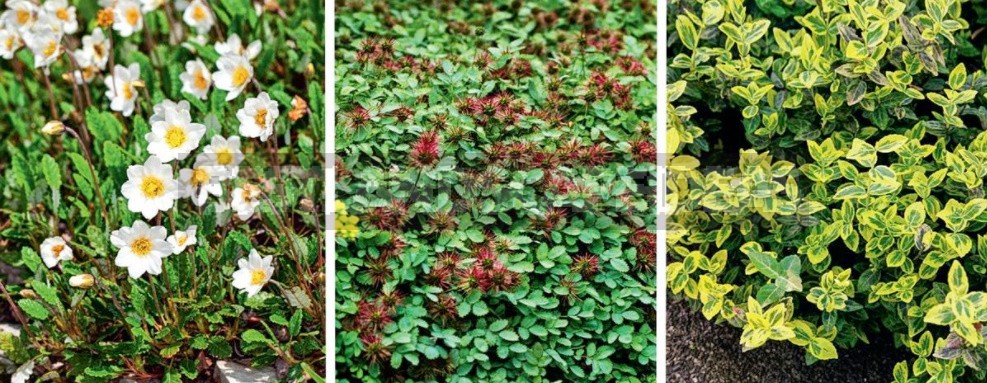
4. Teucrium chamaedrys “growth” up to 40 cm is perfect for planting under trees and shrubs.
5. Bergenia is beautiful all year round. This decorative herbaceous perennial is able to adequately decorate the pond Bank or become a charming “frame” for a garden path. However, Bergenia is a universal soldier.
6-7. Bistorta affinis and Geranium magnificum are also Noteworthy.
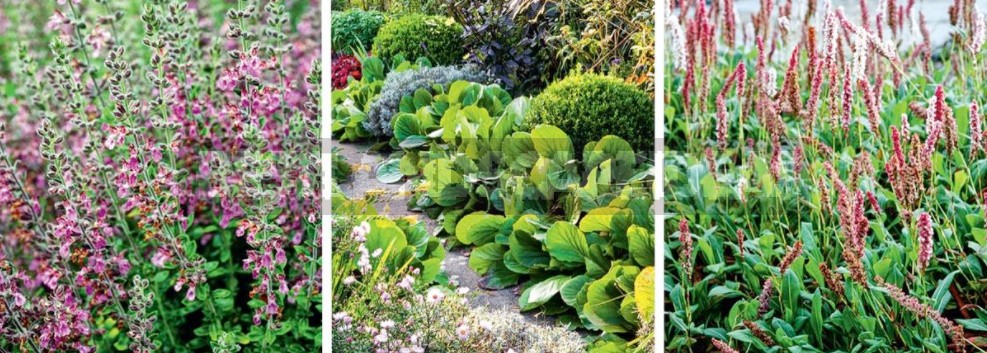
8. the Yellow flower sea is likened to Sedum floriferum in June and July.
9. Thymus serpyllum in summer pleases the eye with numerous white flowers.
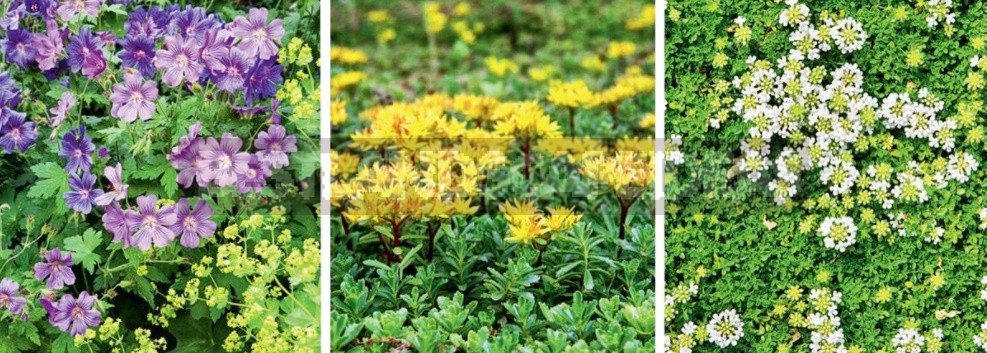
The shade tolerance is their trump card
1. For larger flower beds the perfect solution would be Pachysandra terminalis height of 20 cm.
2. the Red fruits of Duchesnea indica only look like strawberries — they are completely tasteless. Yellow lovely flowers appear from June to September. The perennial grows quickly.
3. on acidic soil thrives Tiarella cordifolia “growth” up to 20 cm, which blooms in may.
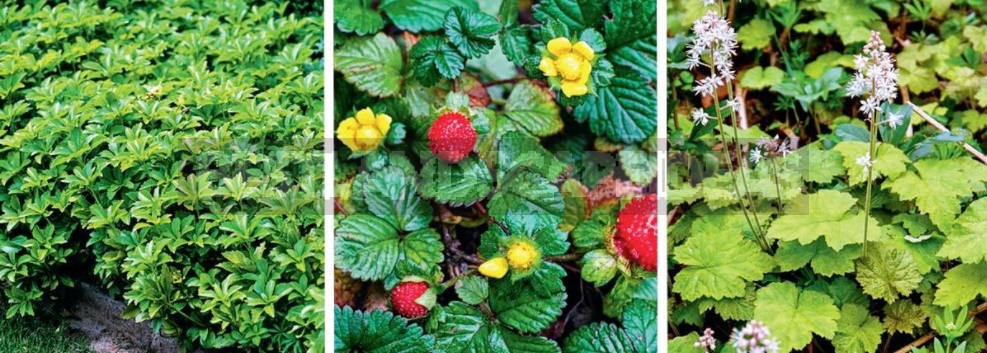
4. Pulmonaria saccharata, up to 35 cm high, has many varieties. The flowers of the plant in spring captivate with all sorts of blue shades.
5. Asarum europaeum “growth” 10 cm without problems can withstand even a deep shadow. Its leaves exude a peppery smell when rubbed.
6. The Charm of naturalness adds to the landing of Lamiastrum galeobdolon ‘ Florentinum’, which reaches 30 cm in height.
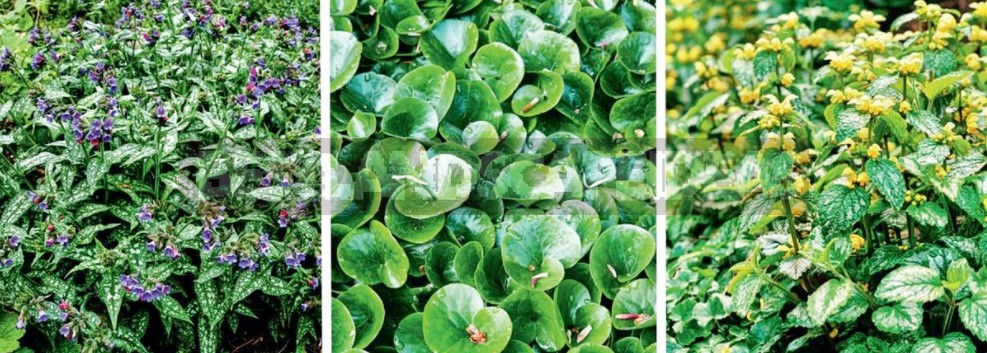
7. unpretentious Vinca minor grows quickly and blooms in may.
8. Astilbe will decorate the landing in the shade with colorful openwork inflorescences.
9. Saxifraga x urbium Rosettes look especially good around the edge of the flower garden.
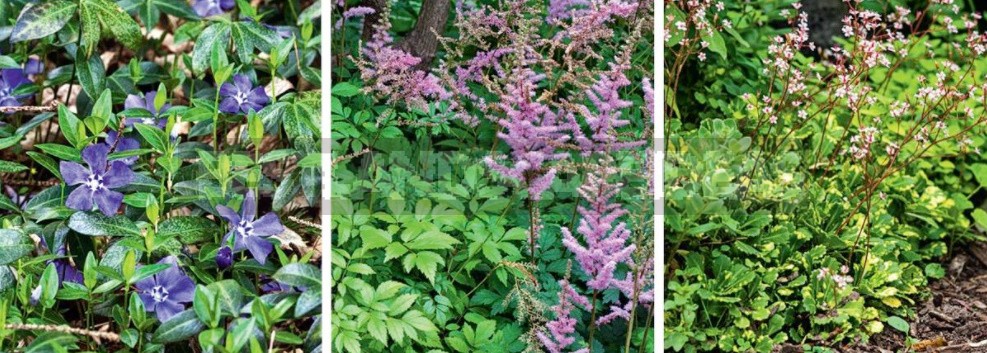
However, there are also universal types of groundcovers, such as Vinca or Arabis: they bloom profusely in the sun, and in the shade they delight with lush greenery.
Special attention should be paid to the trampling-resistant members of the group, such as Cotula potentillina, Sagina subulata, Lysimachia nummularia and Mazus reptans. All of them are perfect for decorating the seams of paths.
In the photo: Cotula potentillina is relatively resistant to trampling, meaning you can walk on it from time to time without causing much damage to the plant
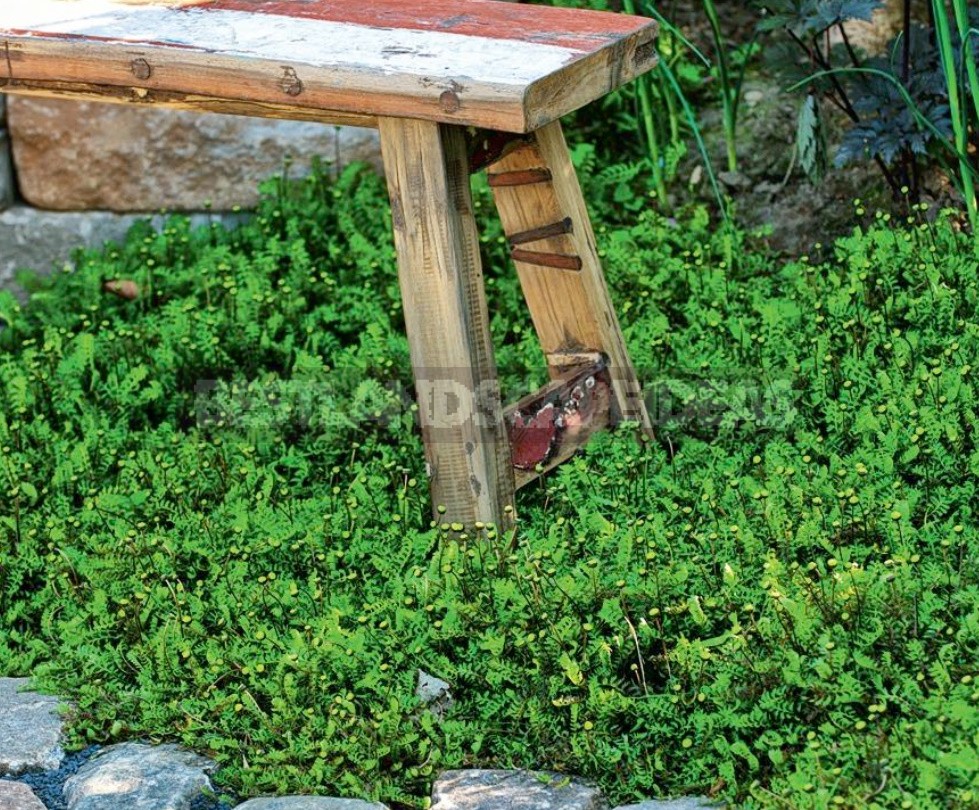
Among them, you can also highlight the spicy Thymus serpyllum and Thymus herba-barona: walking on such “grass” (ideally, barefoot!), you will enjoy the mesmerizing pleasant aromas to your heart’s content.
For large plantings, the best option will be fast-growing hardy plants that do not require special care. In the photo: in a raised flower garden with retaining walls of clinker and roof tiles, Geranium and Stephanandra run amok.
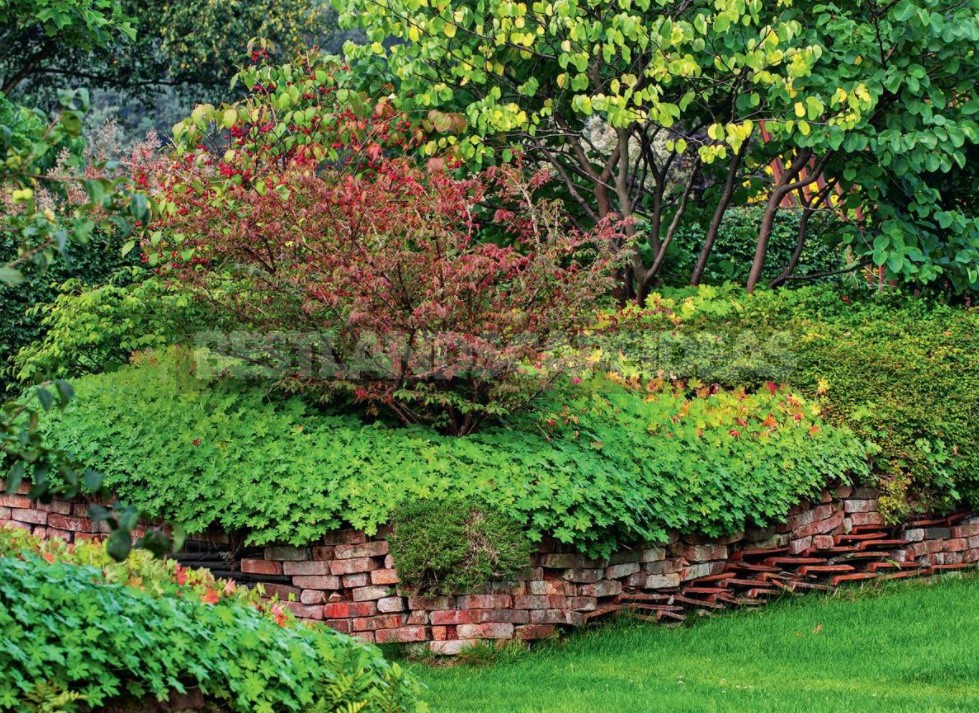
Royal charm
In large flower beds in Alliance with herbaceous perennials, shrubs look good, especially groundcover roses. The assortment of such plants is quite extensive, among them there are plenty of repair and extremely hardy (such Stoics are marked with the ADR sign). These include, for example, the cold-resistant ‘Diamant’ with white flowers. This beauty, which reaches 60 cm in height, constantly blooms from June to September.
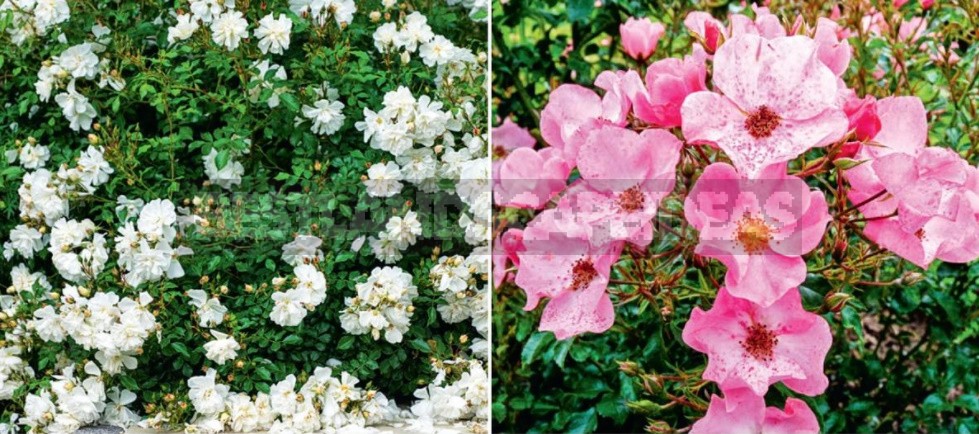
For a flower garden in natural or rustic styles, a good alternative is the repair ‘ Fortuna’ with picturesquely drooping shoots and simple pink flowers collected in lush inflorescences.
